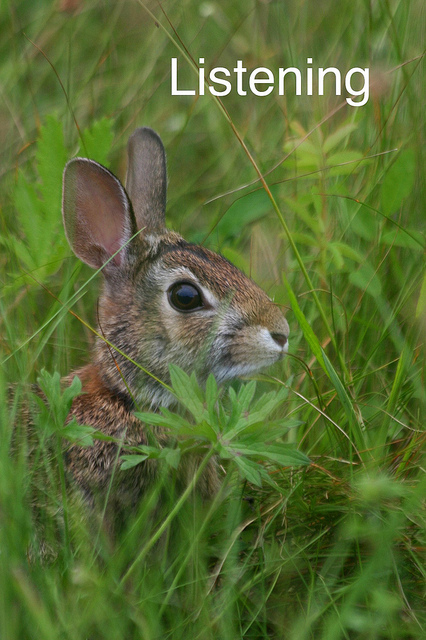- Audio self evaluations
- Listening Journals
- Teaching Listening: RA episodes: Useful tags, Trigger warnings
- Teaching Listening: ACTFL 2014 Presentation
- Teaching Listening: Shifting the Practice
- Teaching Listening: The Lesson Plan
- Teaching Listening: Listening Strategies
- Teaching Listening: Theory and Practice
- Teaching Listening: a series
Over the past few months I have been working on developing a series of lesson plans for my Spanish Conversation class that explore using Radio Ambulante in a 5th semester language class.
As I began to think about ways to use this incredible repository of oral storytelling in my class, it occurred to me that one thing I needed to learn more about before I started writing was how language teachers actively teach listening.
It has always struck me how imperative it is to know how to listen in the L2 classroom, and yet how little active classroom time we actually devote to its development. To put it another way: we all know it as one of the 4 proficiencies that our students need to develop when learning a language, but how often, if at all, do we actively and intentionally TEACH it? Do we just assume that our students will “get it” or “develop it” over time on their own?
It dawned on me recently that I teach a conversation class and you can’t have a real conversation without listening. Conversation without listening is just speaking, and while that is an important skill, it is not what I aim to teach. Listening has to be developed alongside speaking in order to develop conversational proficiency in a language.
What can I do as a teacher to develop my students listening abilities in my classroom, both to improve their conversational abilities but also to be able to explore and appreciate the extraordinary storytelling of Radio Ambulante?
All of this to say that for the next few posts I am going to share some of the things that I learned this summer about teaching listening in the L2 classroom. Some of these ideas come from within the L2 teaching world, but many do not. In fact, when I started to talk to colleagues in other disciplines about my interest in how we intentionally teach listening, I was amazed at the support and interest and ideas those conversations created.
Your comments, as always, will be most welcome.
Featured Image: “Listening” by Barbara Ganley CC by-NC-SA 2.0
CC BY-NC-SA 2.0
